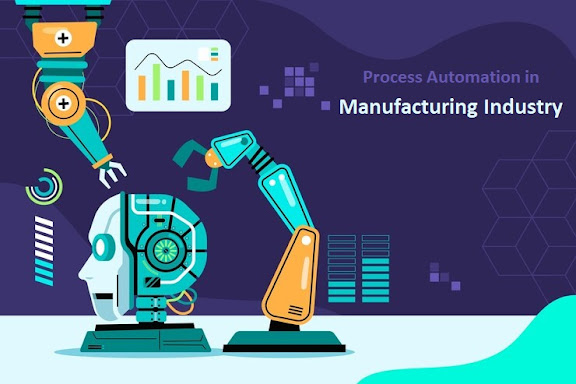
The Role and Impact of Process Automation in the Manufacturing Industry
The way things are made (manufactured) has changed a lot over time. Picture the past, where skilled artisans crafted things with care and the sound of manual production filled the air. From basic tools to today's advanced machinery, the history of making things shows how smart humans are. Nowadays, technology is the big player, changing how we create stuff.
One key change is the move towards automation. This means using machines, robots, and computers to do jobs that people used to do. Automation isn't just about making things faster – it's about making them better. It's like a magic wand that helps factories work smarter. The cool thing is, that this change is happening quickly, transforming how things are made and making businesses more competitive and innovative.
This blog aims to shed light on the pivotal role and impactful outcomes of process automation in the manufacturing industry, offering valuable insights for business leaders navigating the complexities of modern industrial production.
The Evolution of Manufacturing Processes:
Historically, manufacturing processes were labor-intensive, time-consuming, and prone to errors. With the advent of automation, however, the industry witnessed a paradigm shift. Process automation involves the use of technology to perform tasks that were traditionally carried out by humans. This ranges from simple repetitive tasks to complex operations, all aimed at streamlining and optimizing production workflows.
Key Components of Process Automation in Manufacturing:
1. Robotics:
2. Computer-Aided Design and Manufacturing (CAD/CAM)
3. Machine Vision:
4. Programmable Logic Controllers (PLCs)
5. IoT (Internet of Things)
6.AI and Machine Learning
Role and Benefits Process Automation for Manufacturing Industry:
Let's explore the role of each key component in process automation in the manufacturing industry:
Robotics:
Role: Robotics involves the use of automated machines or robots to perform tasks traditionally carried out by humans. In manufacturing, robots are employed for various functions such as assembly, welding, painting, and material handling.
Benefits: Improved efficiency, increased precision, reduced labor costs, enhanced safety, and the ability to operate in hazardous environments.
Computer-Aided Design and Manufacturing (CAD/CAM):
Role: CAD involves the creation of digital models of products, while CAM is the use of computers to control manufacturing processes. Together, they enable the design and production of complex components with high accuracy.
Benefits: Faster design iterations, reduced prototyping costs, improved precision in manufacturing, and seamless integration between design and production processes.
Machine Vision:
Role: Machine vision involves the use of cameras and sensors to enable machines to "see" and make decisions based on visual input. In manufacturing, it is used for quality control, inspection, and guidance.
Benefits: Increased accuracy in inspection, reduced defects, faster production cycles, and the ability to detect subtle defects that may be hard for the human eye to discern.
Programmable Logic Controllers (PLCs):
Role: PLCs are industrial digital computers used to control manufacturing processes, such as assembly lines and robotic devices. They automate electromechanical processes by reading inputs, making decisions based on pre-programmed logic, and controlling outputs.
Benefits: Improved control and consistency in manufacturing processes, faster response times, reduced downtime, and easier adaptability to changes in production requirements.
Internet of Things (IoT):
Role: IoT involves connecting physical devices and sensors to the internet, allowing them to collect and exchange data. In manufacturing, IoT is used for real-time monitoring, predictive maintenance, and optimization of processes.
Benefits: By embracing IoT in manufacturing, companies gain a comprehensive understanding of their operations through real-time data collection. This information empowers manufacturers to make informed, data-driven decisions. Improved efficiency, reduced waste, and increased production are among the tangible benefits of IoT. Connecting devices across the manufacturing ecosystem, whether within a factory or globally, enhances overall operational visibility, leading to smarter resource allocation and streamlined processes. As a result, manufacturers can achieve greater efficiency and responsiveness to market demands.
AI and Machine Learning:
Role: AI and machine learning involve algorithms and models that can learn from data and make intelligent decisions. They are applied for predictive maintenance, quality control, demand forecasting, and process optimization in manufacturing.
Benefits: Integrating AI and machine learning in manufacturing leads to increased automation and improved performance over time. Such inclusion of technologies enables real-time data analysis, facilitating predictive maintenance, quality control, and process optimization. By adapting to changing conditions and learning from historical data, AI and machine learning contribute to enhanced operational efficiency and the ability of manufacturers to stay competitive in a dynamic global market.
